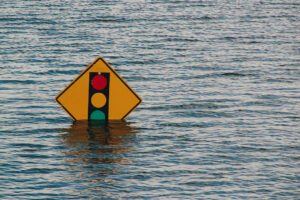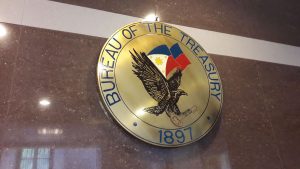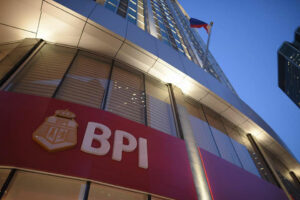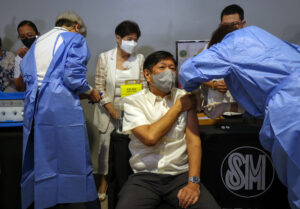Building a more climate-resilient Philippines

It’s been three weeks since I arrived in Cambridge, Massachusetts. I never thought I would have to experience heat waves to know how serious climate change is. It’s not even on the list of courses I want to study at the Harvard Kennedy School (HKS). But the discussion on climate change is part of our summer program, and it’s quite intense.
It is also part of my ordeal, having to walk daily for 15-20 minutes under the heat of the sun from my apartment to HKS. It’s definitely hotter than the summer in the Philippines. I even got a dry cough and a cold in the second week. But it’s not COVID-19, that’s climate change!
The first time I heard about climate change was in 2015. The Paris Agreement was all over the news. At that time, it seemed to me that the problem was solved already. I’m not sure how many people around the world did care much about it, but I joined our government in celebrating since the Philippines is a signatory of the climate agreement, without clearly understanding what it really meant for me and our country.
Unfortunately, the Philippines is a disaster-prone country and more vulnerable to the effects of climate change. While we are used to tropical storms and flash floods which usually result in the cancellation of classes (especially in Metro Manila), we have also been experiencing earthquakes, volcanic eruptions, and El Niño has been happening more often recently, and then the COVID-19 pandemic happened.
A new department to deal with disasters was already proposed prior to the pandemic. It is separate from the National Disaster Risk Reduction and Management Council (NDRRMC), an attached agency under the Department of National Defense, which is currently handling disaster-related concerns. In the opening of the 19th Congress, a proposal for the creation of the Department of Disaster Resilience (DDR) was filed again. In House Bill No. 13, it was reiterated that 74% of Filipinos and 80% of the country’s land area are exposed to the risk of natural calamities.
Consequently, President Ferdinand Marcos, Jr. expressed his support for the creation of the new department during his first State of the Nation Address (SONA) on July 25. He said that renewable energy is on top of his climate agenda to further lower our carbon footprint. He briefly mentioned building new nuclear power plants, using more solar power, and providing investment incentives by clarifying the uncertain policies on upstream gas, particularly in the area close to the Malampaya gas field — a deep-water gas-condensate reservoir located offshore, 65 km northwest of the island of Palawan.
After attending the lectures and discussions on climate change as part of the MPA Summer Program at the HKS, I got even more confused and, at the same time, overwhelmed about how it affects the Philippines and what exactly are we doing back home.
So, I became more curious. I started reading and searching for all related laws and regulations, policies and programs, and anything about climate change.
I’m not a climate change expert but we all have to know and support what our country is doing to save the planet. A strategy roadmap is needed to engage all stakeholders, especially with the use of a balanced scorecard which the public can understand to monitor progress, similar to the World Bank Report on Ease of Doing Business.
As Co-Chair of the Ease of Doing Business on paying taxes, I have witnessed how all stakeholders, both from the public and private sectors, have been very much involved and committed to improving our competitiveness ranking in the World Bank report.
The Philippines has committed to 75% Greenhouse Gas (GHG) reduction and avoidance by 2030. With less than 1% of global greenhouse gas emissions, we are definitely not a major source of carbon emissions, unlike China, the US, and Russia who are the Top 3 counties with the largest carbon footprint. But why should we care? And who is on top of all these climate change initiatives?
The simple answer is we are all in this together. We have one earth to save, regardless of our country’s CO2 emission. We can choose to blame other countries, or resolve to contribute to mitigating the risks and effects of climate change.
In the Philippines, it’s the Climate Change Commission (CCC) that is the sole policy-making body of the government tasked to coordinate, monitor, and evaluate the programs and action plans of the government relating to climate change.
As a fiscal policy and tax consultant, I have worked with the CCC on tax incentives and regulations to build resilience against climate change. In the same way that we strive to have an efficient tax system, a climate-resilient Philippines requires a whole government approach involving all stakeholders, not just to push for a climate agenda but to transition to a more sustainable lifestyle for every Filipino.
While we laud the CCC’s leadership and accomplishments, we need a balanced scorecard to objectively measure the impact of all existing laws, particularly those granting tax incentives, whether they’re really promoting green industries, cities, or jobs — e.g. the Renewable Energy Act of 2009 (RA 9513), the Green Jobs Act (RA 10771), the Philippine Clean Air Act of 1999 (RA 8749), and the Philippine Clean Water Act of 2004 (RA 9275), among others.
Given the challenges we face in implementing the existing laws related to climate change, the CCC must work closely with Congress to make sure mechanisms are in place before new taxes are imposed. We have to be careful so as not to pass the burden of new taxes to the consumers.
The CCC will be in the best position to give an impact assessment and make recommendations as to what policies or best practices can be adopted to achieve our target of 75% GHG reduction by 2030. They should also be part of the discussion and deliberation in the Ways and Means Committee regarding the laundry list of proposed taxes, e.g., carbon tax, congestion tax, energy tax, air pollution tax, biodiversity services tax, single-use plastic tax, and even a border carbon adjustment so we can impose carbon tariffs on carbon intensive products.
In the end, we are one with the CCC in its vision of a climate-resilient and climate-smart Philippines with healthy, safe, prosperous, and self-reliant communities, and more environment-friendly, earth-loving and responsible Filipinos.
This article reflects the personal opinion of the author and does not reflect the official stand of the Management Association of the Philippines or MAP.
Raymond “Mon” A. Abrea is a member of the MAP Ease of Doing Business Committee, the Founding Chair and Senior Tax Advisor of the Asian Consulting Group, and Co-Chair of the Paying Taxes – EODB Task Force. He is a Trustee of CSR Philippines, the advocacy partner of the Bureau of Internal Revenue, Department of Trade and Industry, and the Anti-Red Tape Authority on ease of doing business and tax reform.




